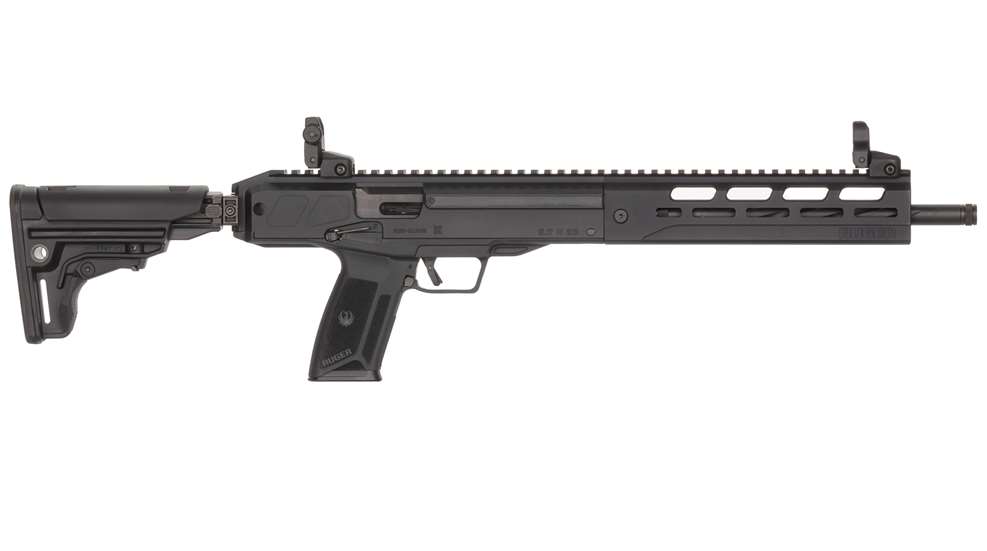
The 5.7x28 mm cartridge was developed in the early 1990s by FN for the P90 PDW (Personal Defense Weapon). The idea behind the PDW was to build something to arm support personnel with a firearm smaller than a carbine or battle rifle, but packing more punch than a service pistol. While the PDW idea never really took off in military service, the P90 (and the 5.7x28 mm cartridge) gained some acceptance in special operations circles and with a few law enforcement units.
For armed citizens, 5.7x28 mm was a niche cartridge at best, with only one manufacturer making guns for the round. That changed in 2019 when CMMG introduced its Banshee large-format pistol, and again in 2020 when Ruger rolled out its Ruger-5.7 pistol, which offered the advantages of 5.7x28 mm cartridge (high velocity, low recoil, greater magazine capacity) at an attractive price point. The 5.7 round, however, was never designed to be just a pistol round. It was created to be used in guns that were easy to carry, yet still have enough power to end the fight. In other words, a PDW. It’s no surprise, then, to see Ruger coming out with a long gun chambered in 5.7x28 mm, the new LC Carbine.

The military’s reasons for the PDW concept dovetail nicely with the armed citizen’s need to have a defensive firearm nearby that brings more to the party than what just a pistol can bring. The power of the 5.7x28 mm cartridge, when tuned with the right bullet, means we can have something compact, lightweight and easy to handle, yet can regularly reach out to distances far beyond what our concealed-carry guns can accomplish and retain its ability to stop fights.
This is exactly what the LC Carbine does, in spades. The gun is small, only 22.5 inches long with the collapsible stock folded, and weighs just shy of 6 pounds without a magazine inserted. The 16-inch barrel on the carbine means that a 40-grain round of American Eagle FMJ will zip out of the muzzle at slightly more than 2,000 fps, providing enough oomph to reliably hit targets at 100, 200 and even 300 yards. I proved this for myself on a recent trip to the NRA Whittington Center, where I was able to ring 12-inch steel targets at those distances using an LC Carbine fitted with a Leupold DeltaPoint red dot, and yet I still had a low-recoiling gun that was light enough to make fast target transitions at close distances.
The LC Carbine uses the same magazines as the Ruger-5.7 pistol, which insert into the grip of the gun. There is a reversible magazine catch on the side of the grip, with a bolt release above the trigger. The gun has both a trigger-mounted blade safety and an ambidextrous, frame-mounted safety—not a bad feature to have in a gun that’s likely to be almost exclusively carried in a bag of some kind. There is a reversible side-charging handle, and the folding stock is detachable, with fold-direction being reversible, too. Speaking as someone who is blessed/cursed with cross-eye dominance, I found these features a welcome touch, as I could adapt the gun to me, rather than adapt myself to the gun.
As mentioned, the LC Carbine was ridiculously easy to shoot. I was able to put round after round into the X-ring of a target at 25 yards, with recoil that was more like a .22 LR carbine than an AR-15 shooting .223 Rem. Manipulating the action comes down to a hybrid of what you would do to work a bolt-action rifle and a conventional pistol. There is a side-charging handle, just like a bolt gun, while the bolt-lock lever, frame-mounted safety and grip-mounted magazine release call to mind using a pistol. This was easy to learn, but it is a change from manipulating either a Ruger 10/22 or an AR-pattern gun.

The performance of the LC Carbine in testing was excellent. I was able to get just larger than 2-MOA groups at 50 yards using the FN 40-grain V-Max round, which zipped out of the barrel faster than 2,100 fps. While this is not the gun to take out to 500 yards and beyond, it is a gun that’s easy to have near you if you need it, and can quickly engage multiple targets at closer distances.
That’s the important point. The LC Carbine is not meant to replace your AR-15, nor is meant to be your everyday carry gun. Rather, it’s meant to be something that is more than a pistol, but less than a rifle. It does that job very, very well.






































